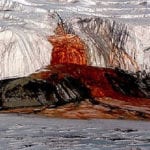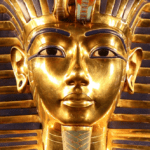 Crime
Crime  Crime
Crime  Technology
Technology 10 Hilariously Over-Engineered Solutions to Simple Problems
 Miscellaneous
Miscellaneous 10 Ironic News Stories Straight out of an Alanis Morissette Song
 Politics
Politics 10 Lesser-Known Far-Right Groups of the 21st Century
 History
History Ten Revealing Facts about Daily Domestic Life in the Old West
 Weird Stuff
Weird Stuff 10 Everyday Products Surprisingly Made by Inmates
 Movies and TV
Movies and TV 10 Actors Dragged out of Retirement for One Key Role
 Creepy
Creepy 10 Lesser-Known Shapeshifter Legends from Around the World
 Animals
Animals 10 Amazing Animal Tales from the Ancient World
 Gaming
Gaming 10 Game Characters Everyone Hated Playing
 Crime
Crime 10 Terrifying Serial Killers from Centuries Ago
 Technology
Technology 10 Hilariously Over-Engineered Solutions to Simple Problems
 Miscellaneous
Miscellaneous 10 Ironic News Stories Straight out of an Alanis Morissette Song
Who's Behind Listverse?

Jamie Frater
Head Editor
Jamie founded Listverse due to an insatiable desire to share fascinating, obscure, and bizarre facts. He has been a guest speaker on numerous national radio and television stations and is a five time published author.
More About Us Politics
Politics 10 Lesser-Known Far-Right Groups of the 21st Century
 History
History Ten Revealing Facts about Daily Domestic Life in the Old West
 Weird Stuff
Weird Stuff 10 Everyday Products Surprisingly Made by Inmates
 Movies and TV
Movies and TV 10 Actors Dragged out of Retirement for One Key Role
 Creepy
Creepy 10 Lesser-Known Shapeshifter Legends from Around the World
 Animals
Animals 10 Amazing Animal Tales from the Ancient World
 Gaming
Gaming 10 Game Characters Everyone Hated Playing
10 Historical Mysteries Marked “Solved”
Even today, the world is full of mysteries. Some may never be explained. Those that are may be solved quickly or, as in the case of many of those on this list, only after hundreds or even thousands of years. The keys to the solutions of these ten ancient mysteries include shifts in focus, a recognition of a group’s unique privileges, and a clarification concerning confusing and insufficient data.
The participation of an expert who wouldn’t normally be involved in a field of study outside his own discipline and the linking of cause and effect were critical in the solving of other ancient mysteries. Solutions to other such mysteries resulted from satellite observations, the investigation of an ancient artifact’s overlooked feature, and microscopic examination.
Each mystery is intriguing, and many of their solutions are amazing feats marked by persistence, determination, and innovation.
Related: 10 Puzzling Mysteries Solved By Science
10 Mayan Calendar
Nobody understood how the 819-day cycle upon which a Mayan calendar was based could work. It seemed clear that the calendar was linked to the movements of planets and their synodic periods, the various times required for them to complete one orbit and return to their starting points, as viewed from Earth.
What wasn’t clear was how the planets’ movements made sense within the calendar’s 819-day timespan since they would have different synodic periods.
The breakthrough that allowed scientists to solve the mystery occurred when they realized that the time period for interpreting the calendar correctly was 16,380 days, or about 45 years, not 819 days. The planets’ various synodic periods all fit within this extended period.
As writer John H. Linden and anthropologist, ethnographer, and linguist Victoria R. Bricker explain, “Rather than limit their focus to any one planet, the Maya astronomers who created the 819-day count envisioned it as a larger calendar system that could be used [to predict] all… the visible [planets’] synodic periods.”[1]
9 “Impossible” Egyptian Statue
What’s “impossible” about an ancient Egyptian statue is that it shows a diminutive pharaoh seated in the lap of a kneeling figure. A pharaoh had never been seen depicted next to anyone of a non-royal origin.
The archival research of Margaret Maitland, the principal curator of the Ancient Mediterranean collections at National Museums Scotland, showed that the sculpture had been “excavated at Deir el-Medina, a site near the Valley of the Kings,” during the 1850s, under the direction of Scottish archaeologist Alexander Henry Rhind. The ancients who lived at Deir el-Medina had charge of constructing the pharaohs’ tombs, and they were permitted to depict the Egyptian rulers in manners denied to others.
Maitland believes that the pharaoh is Ramesses II and that the kneeling figure is Ramose, “a senior scribe” who became “a leader of” the Deir el-Medina people.[2]
8 Reptile Species
According to the University of Manchester, the first fossil of the Ichthyosaurs reptile, Ichthyosaurus communis, was found in the 19th century and described as a representative of a species in 1821.
A year later, three additional species were described based on differences in the shape and structure of their teeth. Subsequently, two of them were re-identified as other types of ichthyosaurs. The third species, Ichthyosaurus intermedius, was seen as distinct from, but “closely related” to, Ichthyosaurus communis.
Partial, isolated remains, lost fossils, and a lack of illustrations of the specimens caused problems in identifying the species of the reptile. Without such materials, paleontologists had trouble understanding how the species differed.
In the mid-1970s, Dr. Chris McGowan raised the possibility that the two species, I. communis and I. Intermedius, which had been re-identified as other types of ichthyosaurs, were, in fact, the same species. The mystery of the true relationships among the reptilian species had been solved.[3]
7 Antikythera Mechanism
According to author Bec Oaks, the Antikythera Mechanism, a super-sophisticated 2,000-year-old, hand-powered mechanism found, in 1901, aboard the wreckage of an ancient Greek ship, combines an astronomical calculator using “a wind-up system to track the celestial time of the sun, moon, and five planets” with “a calendar, the phase of the moon, and the timing of eclipses.”
In fact, the device is so advanced that only part of its operation has been understood. But thanks to 3D computer modeling, a team of University College London researchers was able to “reconstruct” and test the mechanism.
Their research led to the conclusion that the Antikythera Mechanism “may have displayed the movement of the sun, moon, and various planets on concentric rings,” which would have been easier than seeking to reproduce these movements using gears since the ancient Greeks believed in a geocentric, rather than a heliocentric, solar system.
In addition, the device’s Dragon Hand, a double-ended pointer, may have been used to predict eclipses.[4]
6 The Tremulous Hand of Worcester
Scholars suspect that a 13th-century scribe was a Worcester Cathedral Priory monk. However, since his identity has never been confirmed, he is known as the Tremulous Hand of Worcester, a nickname derived from his distinctive shaky handwriting.
Thanks to their collaborative effort, University of York historian Dr. Deborah Thorpe and Leeds Teaching Hospitals NHS Trust consultant neurologist Dr. Jane Alty have determined that the Tremulous Hand of Worcester probably suffered from essential tremor. This chronic condition, which is especially apparent when people affected by it maintain a position, write, or otherwise work with their hands, worsens over time.
Until a neurologist became a partner in investigating the cause of the Tremulous Hand of Worcester’s trembling penmanship, his unusual script had remained a mystery.[5]
5 Ancient Perfume
People have used perfume since the days of the ancient Egyptians, who were the first to dab on fragrances. Not only did the ancient Greeks and Romans follow the Egyptians’ lead, but both made perfume in industrial quantities, the Romans using the scents both “in everyday life [and]… in ceremonies like funerals, to embalm the dead.” Although many perfume containers have been discovered, none of the vessels disclosed the essence of the perfumes’ scents, just their ointments or base.
During renovations in the Spanish province of Seville, though, a jar of ancient perfume, discovered in a well-preserved Roman mausoleum, was found to contain an early fragrance. The fact that the jar, which was made of rock crystal, was sealed with a stopper helped to preserve the perfume, which was a solid substance.
A team of researchers from the University of Cordoba and the Museum of the City in Carmon subjected the specimen to a battery of tests that showed that the perfume contained “hydrocarbons, sesquiterpenes (naturally found in plants and insects), and a vegetable fat.” The scent was probably that of the flowering plant patchouli, which is often described as a mix of earthy, woody, sweet, and musky scents.
The mystery of the essence of an ancient perfume was finally solved.[6]
4 Puquios
Rosa Lasaponara and a team from the Institute of Methodologies for Environmental Analysis in Italy have solved an ancient mystery associated with the Nazca civilization (500 to 200 BC).
The Nazca constructed an amazing, sophisticated subterranean aqueduct system, which continues to function, even now. This system is covered in spiral openings known as puquios. The mystery? What is the purpose of these coiling openings?
As Dr. Alfredo Carpineti, senior staff writer and space correspondent for ILF Science, points out, satellite observations helped Lasaponara and her team to determine that the puquios’ “corkscrew-shaped tunnels funnel wind into a system of underground canals that push the water where it needs to go.” This, then, provides water, throughout the year, for farming, irrigation, and household use.[7]
3 Ancient Language
Seventeen letters spelling seven words, overlooked after an archaeological dig by the Hebrew University of Jerusalem (HU) and Southern Adventist University in the United States, were deciphered in 2022.
Although the inscription, which appears on an ancient comb, is mundane, it represents “the first sentence ever found in the Canaanite language in Israel,” says HU’s Professor Yosef Garfinkel. She sheds light on the ancient Canaanites mentioned in the Old Testament and historical works.
“May this tusk root out the lice of the hair and the beard,” the inscription reads, indicating, as Garfinkel notes, that the alphabet was used in daily activities some 3700 years ago.[8]
2 Building Materials
Like the Colosseum, Rome’s aqueducts are examples of ancient architecture that still stand thousands of years after its construction. As journalist Aspen Pflughoeft points out, “By contrast, modern concrete structures crumble within decades.”
By microscopically examining concrete from the archaeological site of Privernum, near Rome, researchers determined that the Romans’ concrete was reinforced with lime clasts through a process known as “hot mixing.” This allowed calcium in the concrete to fill in cracks, creating a sort of “‘self-healing’ mechanism.”
The researchers want to make their Roman-inspired concrete recipe commercially available so that modern builders can have access to the same building material that the Romans used, which has stood the test of the ages.
The ancient Mayans used a similar innovation to create a building material that would survive Central America’s hot, humid climate. The Mayans created lime plaster by mixing the sap of local chukum and jiote trees with limestone to create “a structure similar to nacre, or mother-of-pearl, the bio-material that protects mollusks from the eroding powers of ocean waves.” This enhances both the lime plaster’s plasticity and weather resistance. The Mayan temples are astonishing testaments to the effectiveness of this age-defying building material.[9]
1 The City of Ubar
In Case Closed? authors Susan Hughes and Michael Wandelmaier explain how nine mysteries were unlocked by modern science.” One of these mysteries is that of the city of Ubar.
In 1980, amateur archaeologist Nicholas Clapp asked the U. S. National Aeronautics and Space Administration (NASA) to use its Challenger space shuttle’s onboard radar to search for “signs of the lost city” of Ubar. As a result, Ubar was located in Oman. The city, surrounded by walls and towers, had been swallowed by a sinkhole.
Clapp concluded that the site corresponded with “many of the features mentioned in old legends and in the Koran,” including its towers, or “lofty buildings”; the sinkhole, which might be the well of Wabar; and its limestone foundation’s crumbling, which caused Ubar to split, one half plunging into the cavern, which “was when Ubar ‘sank into the sands.’”
However, Clapp and his team agreed that, most likely, Ubar had actually been a fortress at which frankincense merchants, traveling in camel caravans, gathered. As NASA’s Ronald Blom says, Ubar acquired the status of a city only in legend.[10]








